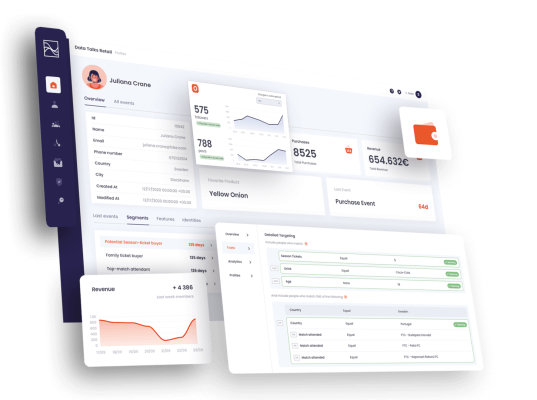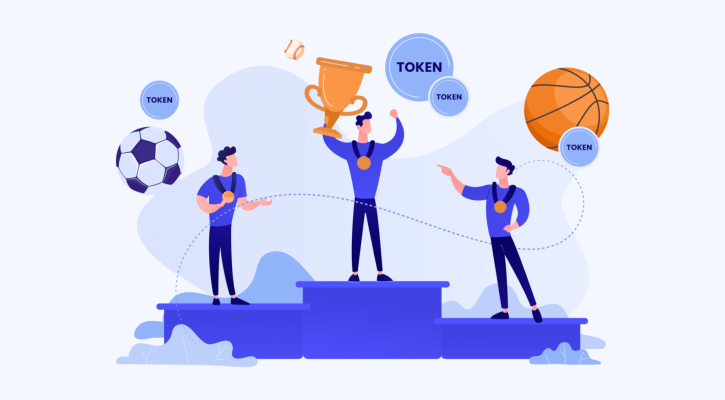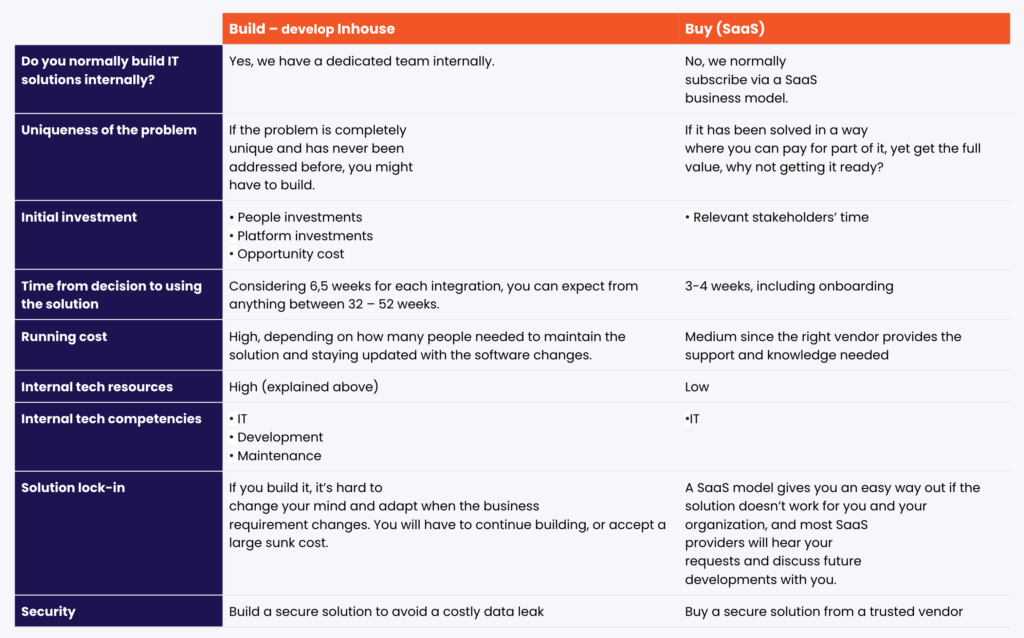
Buying a Sports CDP – what do you need to know and how can you make sure you are asking the right questions before even purchasing one?
In this blog post, we will be going through 5 fundamental questions to ask before purchasing a Sports CDP
So without further ado, let’s jump right in!
Before we dive right in...
Subscribe to our blog today to ensure that you never miss valuable posts such as this one. We are passionate about helping sports organizations deliver a world-class fan experience, because better fan experience means better business. So why not use this opportunity to the fullest?

To purchase or not to purchase a Sports CDP
Being a marketing professional in the sports industry, you know what’s up.
You know that things are changing in the world of sports and beyond, and that digitalization is a major catalyst for this change. You also know that these changes include changes in how your supporters consume sports content and how they interact with different sports brands – including yours.
So being the pacemaker that you are, you decide to investigate what you and your sports organization can do not only to adapt to these changes in the “game” of digitalization but to also be ahead in this “game”.
When researching, you come across the concept of working data-driven. And after reading some more, you learn that this approach is key to adapting to the needs and preferences your supporters have today. But then you ask yourself: how does one actually work data-driven?
So you research some more. And this is when you come across: customer data platform.
Hmm, a what…?
You become curious and begin to explore some more and try to learn what in the world a CDP is and why you should even care about having one. After learning the what and why, you get it. This is the tool that will deliver what you need – or at least you think so. And as a cherry on the cake, you can even get a Sports CDP.
But being the critical thinker that you are, you still have your doubts. And fast forward in time, here you are…
…reading this article
We get it. When purchasing any solution – big or small – you want to be absolutely certain that you understand:
- what the solution can do for you and your organization
- if it can really help you and solve your challenges
- how it can help you optimize your current strategies
- and even set you up for success in the future
So, to help you out, we created this article, where we share: 5 fundamental questions you should ask before buying a Sports CDP.
PS – in case you are still pretty new to Sports CDPs, then we recommend that you first check out this article, before returning back here. See you in a bit!
Still reading? Great! Then you’re ready.
So, let’s take a look at the questions below, starting with…

How do we know if we need a Sports CDP?

The good news is that you probably, to some degree, already know whether you need a Sports CDP or not, since you are reading this article. Moreover, you are most likely also aware of some of the benefits of having a Sports CDP, such as:
- Increased revenue
- ROI on your marketing efforts
- Increased tickets sales
- Increased engagement and loyalty
- Higher supporter lifetime value (LTV)
- Boosted sponsorship value
- Growing your supporter base
- Identify who your high-level supporters are and retain them
- Accurate decision-making based on data insights
…and the list goes on.
In addition, you might also know that a Sports CDP reduces some of the risks of NOT working data-driven, such as:
- data stored in many different places – with a CDP you can store all your data in one place.
- data in silos – when you have data in a CDP it means you are no longer working in silos.
- obsolete data – data in a CDP is updated with every interaction your supporters have with your organization. So you can always rely on this data.
- incomplete data – the best thing about a Sports CDP is that it unifies all your supporter data so that you have a 360-degree view of your supporters. You will therefore have no blind spots when it comes to understanding your supporters.
So knowing all of this, what is missing? Well, the more techy and practical aspect of it all.
So to help you out, we have gathered the following list of 10 questions that you can ask yourself to find out if a Sports CDP is a right fit for you:
- Are you able to collect the right volume of data in various formats (structured/unstructured/semi-structured/relational/binary) to develop a clear understanding of each individual supporter?
- Do you have multiple engagement channels? If so, do you have an existing approach to combining data (including offline and online) from these channels?
- Is third-party anonymous data included in your data strategy?
- Can you easily clean, transform and standardize your data?
- Are you able to resolve identities and ensure privacy/compliance to deliver a great supporter experience?
- Can you deliver a seamless experience to supporters regardless of the channels they choose to interact with you on?
- Are you able to segment and analyze supporters in real-time to enable personalization and improve relevance in supporter experience?
- Do you generate universal supporter profiles and make these profiles accessible to the analytics solutions systems that you use, in the required time frame and format?
- Are you able to create look-alike audiences i.e identify new supporters likely to purchase products, supporters that you can cross/up-sell to, upgrade to higher ticket level, etc.?
- Can you act instantly, based on the insights you get, by making the unified data directly available to other tools and systems, such as a CRM, a Marketing Automation software, or an advertising platform?
If the answer is negative to at least one of the questions above, then you probably want to consider getting a Sports CDP.
This far, you might be asking yourself, “can I not just solve this on my own? Do I really need a Sports CDP to solve one or more of these challenges?”
This brings us to the next question you should ask yourself, which is…

To see how this would look in action, explore the Data Talks CDP demo >>

Should we buy a Sports CDP or build an in-house solution?
To build or not to build, that is the question.
This is probably one of the biggest questions that come to mind when IT and marketing join forces to evaluate new technology that would likely add value to your software arsenal. As we have established, you have two choices:
- either you build your own solution in-house (with all the management and upkeep that this entails)
- or you buy a solution from a vendor
It can be a difficult decision, with a number of benefits and drawbacks to either approach. So to help you make the right decision, we came up with the following framework, and we advise you to treat it as a rule of thumb. We are pretty sure that it will yield the right result.
Have you read through it? Splendid! Then let’s move on to the next question, which is…

What questions should we ask a CDP vendor?

So, after evaluating between buying a Sports CDP and building one in-house, you have come to the conclusion that buying a Sports CDP is the best option for your organization. So you start looking for different vendors and create a list with your different options. You want to book a meeting with them, but what questions should you ask?
Here are the questions you should ask the CDP vendor:
- Can the CDP ingest data from a variety of sources?
Make sure to ask the vendor if the Sports CDP has the ability to collect all the supporter data you want to collect. This can be data from a CRM, ERP system, point of sales system (POS), app data, a data lake or data warehouse, a marketing automation tool, or a loyalty program.
- Does the CDP allow the user to easily access and act on the data without needing help from IT?
Make sure the CDP is marketer-friendly. The marketing team should be able to handle day-to-day segmentation, audience targeting, and campaign management. Also, make sure to check dashboards and that the graphics are easy to understand and interpret.
- Can you access raw data with the Sports CDP?
The Sports CDP must be able to support raw data, as this is the key to uncovering patterns in your supporter behaviors and overall journeys.
- Does the vendor have industry experience and expertise?
You want to make sure that the vendor is specialized in sports and understands your specific challenges and unique needs and goals and how these can be met by adopting their Sports CDP.
- Does the vendor have proven experience and customer use cases?
When comparing vendors, make sure to ask for best practices and customer use cases. You want to partner with someone who not only has the technical experience but also understands the business aspect of implementing a CDP. In addition, the use cases they share with you will also reveal whether they have experience and expertise in your industry. If they do, then they will be able to help you thrive.
- Is your CDP secure?
With the introduction of global and domestic security and privacy legislation such as GDPR and CCPA, you need to make sure you handle supporter data correctly. So ask your vendor if they have security features and guides to ensure you comply with security and privacy laws and directives.
In parallel with asking these questions, there is another big and important question that you should make sure not to skip, which is…

Learn more about why sports organizations need a CDP here >>

How do we know which CDP capabilities we need?
Did you know that there are real CDPs and “wannabe” CDPs? Yep, so for this reason, it’s important that you determine whether what you have in front of you is, indeed, a real CDP. The problem is, many “wannabe” CDPs will not have the capabilities you need in order to fully understand your supporters.
Fortunately, there is an easy way of making sure you know which capabilities you need and that the vendor you’re looking at, has them. You can uncover this by simply making sure that the CDP you have in front of you fulfills the following requirements in this Real CDP checklist:
1. Collect data from any source
The CDP solution should be able to collect any type of data, such as:
- event-level behavioral data (e.g. websites, apps, mobile browsers)
- demographic & firmographic data
- transactional data
- offline & modeled data (e.g. RFM models, propensity scores, next best action)
2. Capture all details from the collected data
The CDP solution should be able to store any input data without losing any details. This means all details associated with purchase transactions, promotion history, web browsing logs, changes to personal data, etc.
3. Store the collected data indefinitely (subject to privacy constraints)
The CDP solution should be able to retain all the collected data for as long as the users specify (subject to regulatory constraints). For instance, specific metadata fields should exist that indicate the time that the data was collected into your CDP, so that the data can be deleted after a certain period of time (if requested by the supporter).
4. Create unified profiles of identified individuals
A CDP should be able to connect many different identifiers from multiple platforms and devices in real-time to enable people-based targeting, personalization, and measurement. Through deterministic and probabilistic matching, it should be able to create universal and persistent supporter profiles by solving the identity of supporters across different states.
5. Share data with any system that needs it
The CDP should be able to integrate out-of-the-box with any software system through connectors and ready-made APIs, allowing access to data for deeper analytics while boosting supporter engagements.
The CDP Institute authorizes qualified vendors (that comply with points 1-5 above) to display a ‘RealCDP badge’. If you can’t find it on the website of the vendor you are considering buying from, then make sure to ask if they have it.
Finally, after coming this far, you feel confident enough about the vendor in front of you. So what is left? Well, to get everyone else onboard.
So…

How can we get buy-in for a Sports CDP?

When sitting down with the decision-makers, the best approach and advice we can give you is to cover the following points:
✅ Connect use cases with key organizational goals
To get the right attention internally, you need to demonstrate use cases and how they can help reach strategic goals and increase business value. Many people see the value in having a CDP but struggle with connecting it to a real return on investment.
✅ Promote a single supporter view
Bring in the right stakeholders from the beginning. Think about who you need support from to succeed? One key objective of having a CDP is to get a single source of truth and to bridge the gap between different departments. A streamlined supporter experience requires a streamlined organization that works together.
To get a single supporter view you need to involve stakeholders that oversee the different kinds of supporter data, such as in-stadium purchases, ticket purchases, stadium entrance data, merchandise data, personal data, and mobile app behavior data. Having all the right stakeholders involved in the beginning will help you get buy-in and launch a successful project.
✅ Promote a data-first future
Supporter data and technology to collect, analyze and act on the data – isn’t going anywhere. Supporters today expect you to know them. They expect to get a relevant, personalized, and engaging supporter experience. And this can only be delivered using data. Moreover, privacy rules and laws (hello GDPR) are constantly changing to regulate the use of supporter data. A CDP will be essential for complying with data privacy, both now and in the future. It’s an investment that will both deliver the supporter experience you supporters expect and deserve while helping your team stay compliant with rules and regulations.
✅ Encourage a no-silos setup
Different departments tend to look at different types of data sets. This not only makes it confusing internally (because most people only know about their own type of data set), it also blocks organizations from achieving business value.
When you cover these points, you can rest assured that you have covered all the necessary points for the decision-makers to feel confident enough before making their decision.
Key takeaways
In this blog post, we have covered 5 fundamental questions to ask before purchasing a Sports CDP, which include:
- How do we know if we need a Sports CDP?
- Should we buy a Sports CDP or build an in-house solution?
- What questions should I ask a CDP vendor?
- How do we know which CDP capabilities we need?
- How can we get buy-in for a Sports CDP?
Now you know exactly what you need to know when you’re getting serious about buying a Sports CDP.


Leave a Reply